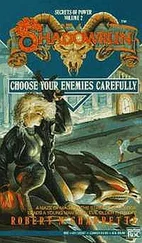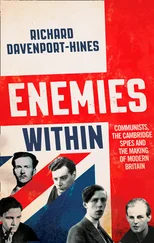Truman was not Roosevelt. Where Roosevelt chose to deal with the refugee issue as a political problem, Truman confronted it as a humanitarian problem. Where Roosevelt asked, “What is expedient?” Truman asked, “What is right?”
With typical bluntness, Truman challenged the Eightieth Congress in his 1947 State of the Union address. He said he didn’t think the United States had done its share in accepting European refugees, and that new immigration legislation was necessary to admit more. It was not a popular stance. Nevertheless, the president asked Congress for a swift, fair, and generous American response to an international humanitarian crisis.
What he got was congressional silence.
In July 1947, six months after his call to action, Truman sent Congress a special message. “We are dealing with a human problem, a world tragedy,” he said. “I urge the Congress to press forward… and to pass legislation as soon as possible.”
Congress adjourned for the summer.
In January 1948, a full year after he first asked for new legislation, Truman again prodded Congress to ante up “at once so that this nation may do its share in caring for homeless and suffering refugees of all faiths.”
Congress crept forward like a garden slug.
On June 2, 1948, nearly seventeen months after Truman’s 1947 State of the Union address, the Senate finally passed a refugee bill; the House followed with its version ten days later. Neither chamber held a single hearing on its respective bill. Then, anxious to adjourn for the summer, Congress hastily merged both bills and, in a late night session, passed the Displaced Persons Act of 1948, which authorized the entry of two hundred thousand refugees over the next two years. The bill managed to incorporate the worst of the Senate and the House versions. The devil lurked in the details.
To begin with, the Displaced Persons Act of 1948 created an artificial “device” to discriminate against Jewish refugees. U.S. visas could be granted, the act stipulated, only to displaced persons who had entered refugee camps in Austria, Germany, and Italy before December 22, 1945. That seemingly innocuous, random date rendered ineligible more than 90 percent of the mostly Polish Jews who survived the Holocaust, since they sought safety in the West after that date. Then, to make it nearly impossible for the eligible remaining 10 percent to secure visas, the bill added a list of financial, occupational, and good conduct restrictions. Just as the United States had blocked the entry of the more than nine hundred St. Louis refugees under an old immigration law, it now blocked the entry of Jewish refugees under the new 1948 legislation. The reason for the bigotry was obvious: It was an election year.
The Eightieth Congress didn’t stop with Jews. It used the same date “device” to block the entry of middle European Catholics, many of whom refused to live under communism both as a matter of conscience and out of fear of persecution. Most of these anticommunist Catholics had fled west after 1945, when it was clear that their homelands would become “independent” communist countries under the sway of the Soviet Union.
The Displaced Persons Act of 1948 further stipulated that 30 percent of the refugees admitted to the United States had to be farmers, a regulation that further discriminated against Jews, who couldn’t own land, and favored Ukrainians who could and did. The bill went on to reserve fifty thousand slots to Volksdeutsche , mostly the descendants of seventeenth-century German settlers in Ukraine who maintained cultural and emotional ties to Germany. With one foot still in Germany, the Volksdeutsche had been perfect candidates for Nazi collaboration.
Finally, the act not only used the December 22, 1945, device to discriminate against Catholics and Jews; it also favored refugees from the countries “annexed by a foreign power” (the Soviet Union). The act mandated that 40 percent of the refugees to be admitted into the United States under the bill had to come from the countries now behind the Iron Curtain. It was generally known by 1946 that thousands of Belorussians, Estonians, Ukrainians, Latvians, and Lithuanians had volunteered to help the Nazi Gestapo and Einsatzgruppen identify, round up, and execute more than one million Jews, mostly Ukrainians and Belorussians, living in their communities.
• • •
Not only had Hitler given the SS the task of building and managing the Reich’s string of camps; he also had put it in charge of the Final Solution plan to exterminate the Jews and Gypsies of Europe as well as the Reich’s political enemies. To get that massive job done, the SS created Einsatzgruppen or death squads commissioned to liquidate the Jews, Gypsies, and upper- and mid-level communist commissars in German-occupied territories. These squads mopped up behind the German army as it marched east across Europe toward Moscow in Operation Barbarossa. Although they murdered all the Gypsies and communist bureaucrats they could find, the Einsatzgruppen specialized in unarmed, sitting-duck Jews. As the Nuremberg War Crimes Tribunal succinctly put it: “The purpose of the Einsatzgruppen was to murder Jews and deprive them of their property.”
Given communication barriers and limited manpower, there was no way the Germans could identify, round up, and shoot more than a million Baltic, Belorussian, and Ukrainian Jews without help. To solve the dual problem, the SS recruited volunteers from local populations called Hilfswillige ( Hiwis for short), who were more than willing to kill Jews. As one German army officer put it: “We were actually frightened at the bloodthirstiness of these people.”
Hundreds of Einsatzgruppen field reports found by the U.S. Army and the Red Army in files in Berlin, as well as Nazi war crimes testimony, detail the work of the Nazi collaborators. Two examples serve to illustrate the degree of their complicity:
• Einsatzgruppe C engaged in an anti-Jewish action near the Ukrainian town of Korosten in September 1941. The group commander divided his unit into squads of thirty men, one of which was made up exclusively of Ukrainian volunteers. He ordered the Jewish victims to kneel in small groups at the edge of a mass grave. Each squad shot at them for about an hour before being replaced by a fresh squad.
• Einsatzgruppe A received orders in October 1941 to liquidate all the Jews in the Belorussian town of Sluzk. The group commander divided his battalion into four companies, two of which were made up entirely of Lithuanian volunteers. After the operation was completed, the commander reported to Berlin “with deepest regrets” that the action “bordered on sadism… with indescribable brutality on the part of both the German police and, particularly, the Lithuanian partisans.”
Heinrich Himmler, commander in chief of the Einsatzgruppen, witnessed a group C commando unit execute one hundred Jews in Minsk, Belorussia, in August 1941, two months after Germany invaded the Soviet Union. According to an eyewitness:
As the firing started, Himmler became more and more nervous. At each volley, he looked down at the ground… The other witness was [General Erich] von dem Bach-Zelewski… Von dem Bach addressed Himmler: “Reichsfuehrer, those were only a hundred…. Look at the eyes of the men in this commando, how deeply shaken they are. Those men are finished for the rest of their lives. What kind of followers are we training here? Either neurotics or savages.”
Historians estimate that the Einsatzgruppen operating in the Soviet-occupied countries murdered between 1.3 and 1.5 million Jews, Gypsies, and communist leaders. Scholars also agree that the thousands of Baltic, Belorussian, and Ukrainian volunteers from local police, partisans, and militia groups were “indispensable” to the slaughter.
Читать дальше












